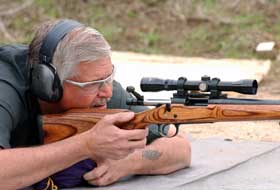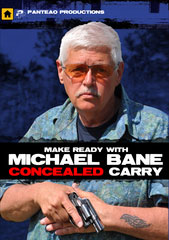In the absence of a predetermined action in case of an emergency, 538 people panicked and died. Tenerife changed how airline personnel talk to new passengers...that's why we get the lecture on finding the closest exit, lights leading to the exit, etc.
Anyway, what I turned up was a 1998 analysis revisiting the human factors involved in the crash in the Journal of Air Transportation Worldwide. Okay...by now you're thinking that I've drifted off into Lost territory...but there's a good reason. Here's one of their key points:
Weick (1993) theorized that the key to understanding Tenerife may lie in the principle of stress causing regression to first learned responses. This means that in stressful situations, people regress or behave in ways or patterns they learned first.Moreover, the paper quotes the following from on A.L. George, writing in 1986, on the impact of crisis-induced stress on decision-making, specifically in reference to the medical implications of nuclear war (something I suppose we'll be thinking about again, a lot sooner than we'd like):
George (1986, p. 542) outlined the following specific effects of stress on the performance of complex tasks:
1) Impaired attention and perception
a) Important aspects of the situation may escape scrutiny
b) Conflicting values and interest may be overlooked
c) Range of perceived alternatives is likely to narrow, but not necessarily to the best option
d) Search for relevant options tend to be dominated by past experience; the tendency to fall back on familiar solutions that have worked in the past, whether or not they are appropriate to present situations
2) Increased cognitive rigidity
a) Impaired ability to improvise; reduced creativity
b) Reduced receptivity to information that challenges existing beliefs
c) Increased stereotypic thinking
d) Reduced tolerance for ambiguity leading to cutoff of information search and premature decision
3) Shortened and narrowed perspective
a) Less attention to longer range considerations and consequences of actions
b) Less attention to side effects of options
4) Shifting the burden to the opponent (another)
a) Belief that one’s options are quite limited
b) Belief that the opponent (another) has it within his power to prevent impending disaster
Read the whole thing, keeping in mind how the factors described in this paper might be in place in civilian self-defense or active shooter/terrorist situation. Look especially at Point 1(d): Search for relevant options tend to be dominated by past experience; the tendency to fall back on familiar solutions that have worked in the past, whether or not they are appropriate to present situations.
Let's say we have spent years perfecting our responses to what we might think of as "most likely" self-defense threats, that is, we are able to easily access our concealed carry weapon and quickly deliver 2 or more shots center mass at reasonable self-defense distances. That is our "default," in the words of the paper references above, a "familiar solution.' We've trained for it; we've integrated into our mental index card file.
Now, what is the blast radius for suicide belt or vest? Well, it depends on the type and amount of explosive used, but here's some food for thought from Greg Ellifritz, who has become one of the most knowledgeable people on understanding the emerging threat:
Time, distance, and shielding are the only defense. Realize that a 20lb suicide bomb vest loaded with shrapnel is dangerous within 400 meters. That’s a long distance! Recent research has determined that 15 meters (about 50 feet) is the distance that means the difference between life and death in most suicide bombing incidents. If you are within 15 meters of the bomber when he detonates, you will likely die. If you are beyond 15 meters, you will likely live, but may be seriously injured. Ultimately, whether you live or die depends on the terrain, the type of bomb and shrapnel and how far away from the bomb you are. The farther away you can get, the better off you will be. Ideally, distance combined with some type of cover that will stop shrapnel and projectiles is best. For the 500kg Oslo car bomb, people were likely hit by shrapnel up to 1/2 mile away!So in the event of a fully rigged bomb built to ISIS' specs, you'll need to be 4 1/3 football fields away to not come down with a really bad case of dead from those center mass shots. Ellifritz goes on to say:
I will say this…if you decide to shoot the bomber, you must expect to die. Remember that danger zone of 400 meters I talked about earlier? How many of you can make a head shot at 400 meters with your concealed carry pistol? If you can’t, you are in the kill zone. If the bomber detonates you may be seriously injured or killed. By definition, if you are close enough to take a shot, you are going to be within range of the bomb’s blast. If you do shoot the bomber, you must go for a head shot. If he is wearing a bomb vest, your bullet will likely detonate the bomb if you hit it.I have heard this truth repeatedly in the last month as I interviewed experts. Like many of us, I've had the "Mozambique," which originated with Col Cooper, or in its more politically correct definition, the "failure drill," hammered into my head since I first began training so many years ago...two in the belly; one in the head; I'm alive, and you're dead! goes the verse. But that drill comes from a time when the bad guy didn't blow up.
Over the years, I have seen a marked move away from the head shot...remember, on the standard USPSA target the "head" was often referred to with the more politically correct "upper 'B' zone." I audited a few days a of a class a couple of years back where the instructor went to great lengths to suggest that a "mobility stop," that is, a shot in the pelvic area that took the aggressor to the ground, was far superior to the head shot. The rationale is the head, especially a moving head, can be a hard target to hit.
A mobility stop might make a lot of sense with a knife-welding mugger; less so for an attacker armed with a gun. Just because you knock somebody down and cause them a lot of pain doesn't mean they can't still shoot you (unless the mobility stop is followed very quickly my a shot on the now much more stationary head). If the aggressor is in fact wearing a bomb vest, a mobility shot just means you get a couple of seconds more life before the bomb is manually detonated.
That's why trainers like Gabe Suarez, who has been studying these issues for years, has defaulted to the head shot, the central nervous system stop. In fact, Suarez lists 4 compelling reasons why the head becomes the target of choice:
1) Human beings are bigger and stronger today than at any other time in history due to advanced nutrition, the social prevalence of weight lifting and the popularity of contact and martial sports. Any casual perusal of military museums will reveal that the average male was much smaller as close as a couple of generations ago.
2) The prevalence of tactical pharmacology, both legal and illegal is far more common and refined today than in the past. Substances from methamphetamines and cocaine to excessive HGH and similar substances give rise to mental attitudes of invincibility.
3) Proliferation of body armor. While ammunition has progressed dramatically in the last decade, so has the availability of protection from that ammunition. Today the technology of body armor has developed to the point that even an assault rifle may be defeated. Armor has always been common, and even back in 1991, one of my gunfights involved armored suspects.
4) Finally, the reality of today shows that the adversary might be a Jihadist, or other terrorist, and not just the uneducated urban sloth seeking to take your watch at point of stolen pistol. At the time of this writing, ISIS is exhorting its followers around the world to carry the jihad to every western shore. As well, any cursory study of Active Shooter events around the nation reveals that in a great percentage, there are explosives on or near the terrorist, ready to be detonated when capture or defeat is at hand.
So what's the net-net to all this for the armed civilian? I go back to my previous post — the majority of your training is focused on self-defense, what we can refer to as the known threat. But a portion of your training has to be focused on the unknown threat that takes you outside the realm of what we have considered defensive shooting.
On the podcast I asked a simple question — can you reliably hit a 25-yard head shot with the pistol you're carrying every day? I honestly have to work at, and it's one of the reasons I decided to go, at least for the time being, to a red-dot sight. I accept that I'm giving up a modicum of speed (although I'm working on that as well) for the additional accuracy.
And we come back to Col. Cooper's combat triad — marksmanship, gun-handling and the combat mindset.







16 comments:
Since the majority of shooting ranges only have handgun bays that go to 25yds, this presents a problem for those who want to work on extending their longer range capability with handguns. If you don't/can't practice at longer ranges, you have defined a limit on your capabilities for handling a jehadi type scenario.
One of the outdoor ranges in my neck of the woods has a 40yd tin-can range. I stumbled on the fact that the boot grips on my snubbies double my hit zone diameter. Switching to rubber/neoprene full size grips that have been shortened almost to the bottom of the grip frame allow me to keep my shots within a head size group. The drawback is they don't conceal as well as the plastic boot grips.
I was surprised to find that a gun could move in my grasp enough to affect accuracy with just a 2" barrel.
Now I'm wondering if a similar situation exists for my .45 Officers, with the various types of grip panels they wear.
Would using an 8-inch target at 25 yards represent the average human head?
Will...smaller targets closer in. One way that is super easy and cheap is 3X5 index cards stapled to your target (an old Suarez) trick. Instead of shooting that big ole IDPA or USPSA target, focus on putting all your shots into the index card. Up close (3 yards to start) all the shots should be touching. Then keep moving the target back and making sure all your shots are on the index card.
Don, yep, that'll do it. I have a 10-inch plate at 20 and a 12 inch plate at 25. If I'm ever allowed by my doctor, my physical therapist and my Sweetie to walk down the hill again, I'll replace them with smaller plates!
mb
Pieces of this discussion were conducted in the '70s with the (fortunately) quite rare occurrence of PCP-Assisted Bullet Sponges, exacerbated by FMJ and less effective HP ammo available back then. IIRC, the idea of defaulting to head shots died a quick death mostly because of the difficulty hitting that size target and the highly probable wrath of officialdom and being excoriated by the liberal media.
Today, head shots certainly make sense, to the point that they should probably be the default; if one trains to achieve a CNS stop, one has the option of shifting to center torso between the armpits, assuming one (properly) evaluates the threat with suffiicient speed. Doing the reverse takes too much time. A firearm is lethal force, and if one is justified in, first, pointing a firearm at a threat and, second, pressing through to sear break, there's no reason to be concerned about the lethality of the action because it is in itself a lethal action. As they say, training, training, training.
This does, however, raise the issues of aging eyes and lesser calibers; I can hit what I can see, but I cannot now see at greater distance with the precision of a couple decades ago, and the front sight has grown somewhat more fuzzy in recent years. That promises to worsen over time, which has me looking very seriously at red dots suitable for pistols. I expect that market to expand greatly in the near future, hopefully to include smaller sights able to fit smaller-than-duty-size handguns.
Given the solidity of the cranial vault there is a minimum energy level required to be rapidly effective against it. That doesn't mean everyone has to carry a 357 or 10MM, but it does call into question the highly popular .380 autos and mini nines.
Those bombs have a suicide switch. Even if you make the head shot the bomb will blow when he drops the switch.
I would love to see some test done to find out what happens when you shoot the vest. Does it blow up or do you damage it badly enough it doesn't blow?
With all honesty, the 3x5 card drill predates Suarez by decades, but props to him if he is keeping it alive.
Anon @6:20pm:
No, they don't have a dead-man's switch. Their hands are busy using weapons. There will be a manual switch, and/or a timer/, and/or a remote by cellphone trigger.
Sensitivity to bullet impact will depend upon the actual explosive material, the detonator type, and how much, and type, of wounding material is packed in front of the explosive. That can act as armor shielding the explosive, especially for handgun velocity rounds. Some explosives are very sensitive to impact, and others can't be detonated that way. Very doubtful you could tell what type by observation during an attack. May be covered by clothing or other gear, anyway. You may not even know if they have explosives, although best to expect they do.
Michael:
I'm typically shooting at a small steel juice can, so hits give me a moving target to track. Bouncing and rolling across the backstop berm is a neat challenge. (I'm doing this all DAO, as they are internal hammer or pocket hammer snubbies.)
At anywhere near that distance, I would not expect a hit to be a DRT, but would expect at least a stunning or knockdown effect, so a closer approach could enable a true cranial-optical hit to shut them off permanently. With the prudent expectation that explosives will be involved, a finishing shot, or equivalent, should be a mandatory requirement in any mass shooting scenario.
I'm typically shooting at a small steel juice can, so hits give me a moving target to track. Bouncing and rolling across the backstop berm is a neat challenge.
Can't remember who, but some wizard a couple years back came up with a mechanical "randomizing moving plate holder" that, when triggered, moved a steel plate in a rather erratic fashion. Never seen one in real life, but the video looked like keeping the front sight on it closely enough to score hits would be a feat.
The general population has not had enough experience with explosives and terrorism to react properly. I had an experience lately with a suspicious package while waiting on a train. Police were on scene directing folks away from the package(most likely a misplaced suitcase). Almost everyone just stood behind the policeman and gawked. On the other hand I walked briskly to the other end of the platform so there was a solid concrete wall between me and the package and right up next to the exit.
"No, they don't have a dead-man's switch."
How do you know? How can you say that with confidence? How does anyone know what's hidden from sight, or even in plain sight? How does anyone know what generation the device is? How does anyone know if it will just blow up, or if it's "dirty" or poisonous? How does anyone know if there are peripheral devices set to go off after the initial one, as was the case in an infamous bombing in the UK a while back? How does anyone know the "creativity" of the device designer? How do we know if there are accomplices ready to act? I'm sure that we haven't seen it all, or ever will.
I'd rather assume the worst-case scenario "that we all could die", then react to that. Michael's points are dead-on and so are Gabe's.
The US will be a much safer place when we have "Alpha" leadership and the decision is made to go on the offense. The current problem must also be "contained". How can anyone stand up in front of our fellow American's and defend a porous border? That's where you start. Then, you "clean up the house".
Be vigilant. Be trained. Practice. Repeat.
Life Member
What a conundrum. To take the shot or not. My first response is to run the other way but lacking that option what should one do? Well, if I'm being fired upon, I hope I have the where with all to return fire. What's that safety rule: Know your target and what's beyond. In this case if you hit the target you may take out a room full of people.
Dead-man's switch or not? If it is a suicide bomber, it probably has a dead-man's switch. If it is a terrorist that is wielding other weapons--rifle, handgun, etc.--then it probably doesn't have a dead-man's switch. Most "plastic explosives", especially the military-grade ones, are resistant to bullet impacts--they are designed that way. Shooting the bomb's electronics package is problematic. It may or may not be designed to detonate the explosive if tampered with in any way.
The reason to shoot someone that has a bomb vest should be to limit damage by keeping them from getting to a place where they could produce a higher body count. Unless you have a rifle, even thinking about taking a shot at over 50 yards means you are very desperate.
All the comments just reinforce the ideas at the start of the article concerning decision making. Dead man switch, percussion detonated explosives, etc, etc. None of it matters, Shoot the bastard, shoot him a lot, preferably shoot him in the head a lot. It may or may not work out for you, but if you unhesitatingly engaged you've done the best you can for yourself and everyone else.
@ Greg Hamilton
Truth!
This makes sense. The middle east terrorist when to bombs, including vests, when they were getting shot by armed Israelis. The terrorists fixed that by using bombs, and oddly enough, the Israeli government disarmed its citizens.
Lets assume snot happens to everyone. The bomber isn't exactly in the center of the crowd or near the high-value target where he wants to be. You aren't where you want to be either.
You move closer and you're inside the blast zone.
You move farther out and the bomber has more time to optimize his position.
I'm thinking that time works in favor of the bomber, or he'd be a pink mist already. That means you close the distance now and take the shot you have. As Napoleon B. said, "You can ask me for anything you like, except time."
That perspective is worth exactly what you paid for it.
Rob
A drill I used to run with a partner was to use a tennis ball with a string through it tied to a small tent stake. We would each shoot at the ball on a command (threat, gun, or kumquat)and the first to hit wins but the second has to make contact after the ball goes off the mark. If I was feeling salty, I would engage a second time before he could engage.
After warming up we would play Behind The Power Curve, where one of us would take the lead and draw on the target without word and engage the target. The other shooter tried to pick up on the cues of the first and engage the target before the initiating shooter.
The size of the tennis ball makes the shooter apply the fundamentals to place accurate fire on the target. AND it is a reactive target, which are lots of fun.
Marshall
Post a Comment